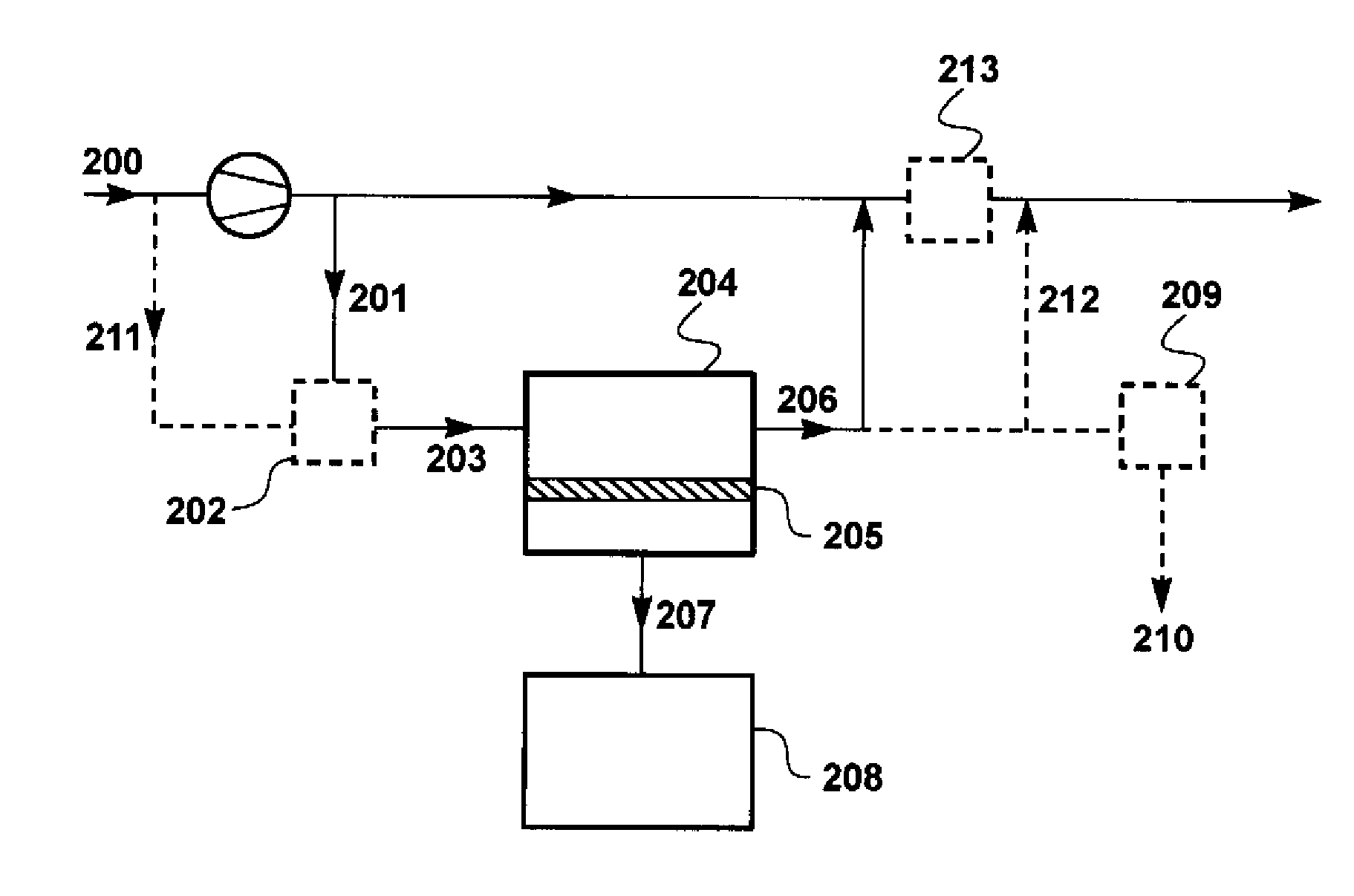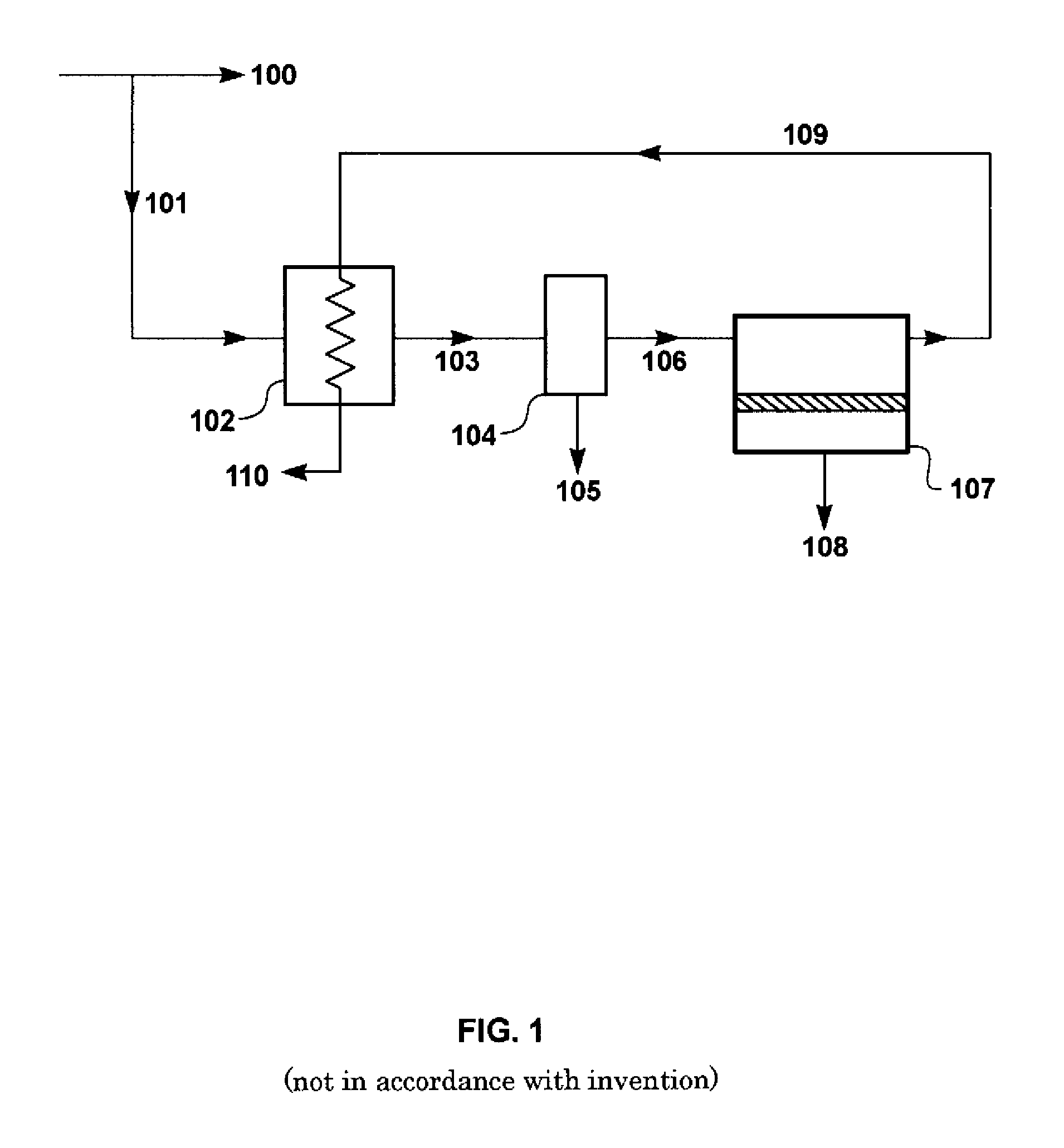Fuel gas conditioning process using glassy polymer membranes
- Summary
- Abstract
- Description
- Claims
- Application Information
AI Technical Summary
Benefits of technology
Problems solved by technology
Method used
Image
Examples
example
[0096]Calculations were performed to compare the composition of conditioned fuel gas produced by membrane separation using traditional rubbery membranes according to the general process shown in FIG. 1 (and disclosed in U.S. Pat. No. 6,053,965) with the composition of conditioned fuel gas produced by membrane separation using glassy perfluorinated polymer membranes according to the process shown in FIG. 3. The calculations were performed using a modeling program, ChemCad 5.6 (ChemStations, Inc., Houston, Tex.), containing code for the membrane operation developed by MTR's engineering group. Gas feed pressure is assumed to be 325 psia for both the traditional rubbery and glassy perfluorinated membranes; permeate pressure was assumed to be 150 psia and 115 psia for the rubbery and glassy membranes, respectively. Operating temperature was assumed to be room temperature. The same membrane area (200 m2) was assumed to be used for both membrane types.
[0097]The results of this comparison a...
PUM
 Login to View More
Login to View More Abstract
Description
Claims
Application Information
 Login to View More
Login to View More - R&D
- Intellectual Property
- Life Sciences
- Materials
- Tech Scout
- Unparalleled Data Quality
- Higher Quality Content
- 60% Fewer Hallucinations
Browse by: Latest US Patents, China's latest patents, Technical Efficacy Thesaurus, Application Domain, Technology Topic, Popular Technical Reports.
© 2025 PatSnap. All rights reserved.Legal|Privacy policy|Modern Slavery Act Transparency Statement|Sitemap|About US| Contact US: help@patsnap.com



